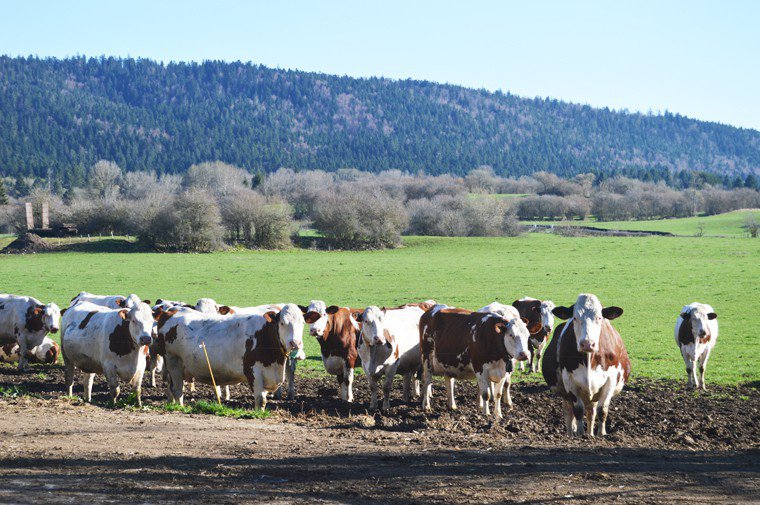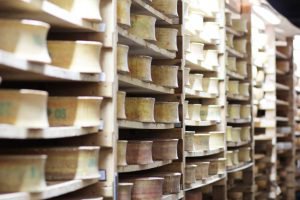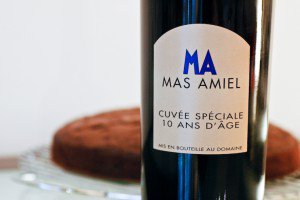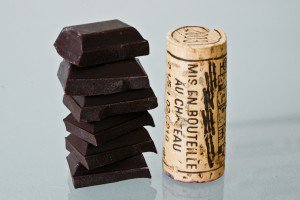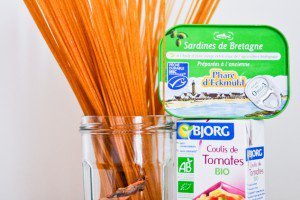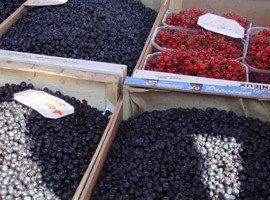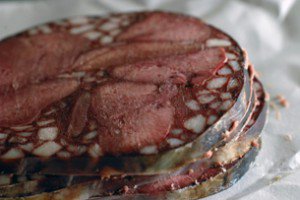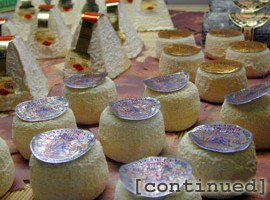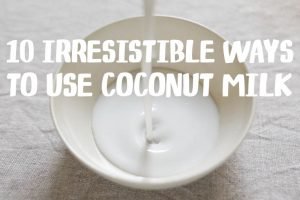This is a guest post written by Anne Elder, my wonderful intern, about the recent class trip* she took to the Jura. The photos are also hers. Take it away, Anne!
When I drive through France, the roadside signs always make me feel like I’m about to meet a celebrity, bearing names of towns I only know from the perspective of my tiny Paris kitchen, and the labels on my favorite foods.
I felt that very excitement traveling through the Jura, a French region that’s just south of popular oenophile destination Burgundy, but one that is oft overlooked by tourists. It is a lush mountainous region near the Swiss border, where the land lends itself to the production of many delicious terroir foods.
The concept of terroir is pervasive in French cuisine (and increasingly in America, too), dating back centuries.
Eating a produit du terroir means you are indirectly tasting the ground in (or on) which it was made — tasting the soil, the climate, the craftsmanship. This notion ranges from cheese, and how the hay eaten by the Montbéliard cows impacts its flavor, to wine and how the precise fusion of soil and climate and skill meet to grow grapes that are pressed into such a complex beverage.
Jura is a goldmine when it comes to seeking out terroir. Equipped with rain boots and notebooks, my classmates and I were determined to learn how to taste France. We drove over hilltops, past rows of sapins (spruce trees, which are cut down into boards where the cheese will be left to age) and stayed in a gîte, a no-frills guest house.
During our five days there, we were afforded the opportunity to see the cheese production from the farm to the aging cellar, taste wine still ripening in oak barrels, and sample many more local recipes and products cooked by gracious hosts.
If you are able to travel to Jura on your next trip to France, here are the terroir products you must not miss.
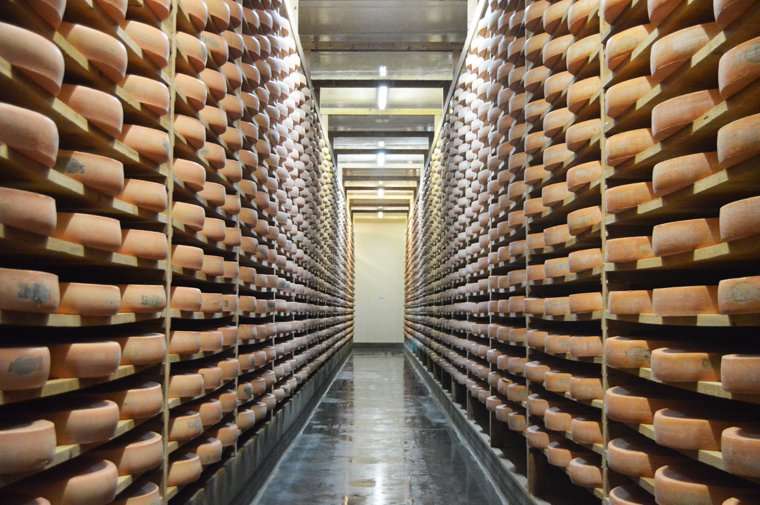
Comté wheels aging at the affineur’s.
Cheese
Jura is home to France’s most popular cheese: Comté.
Comté is made from the milk of Montbéliard cows, which are perfectly brown-and-white spotted — everything my city girl American heart hoped to see from a cow on a French dairy farm. You can tell when the milk was produced based on the color of the cheese: a yellow cheese is from warmer months when the cows eat grass, and whiter cheese is from colder months when the hay has been dried from the previous harvest.
Once the milk has curdled and been pressed into a wheel at the fruitière (cheese coop), Comté must age for at least 4 months on wood shelves made from the nearby spruce trees. If any of the steps in the comprehensive cahier des charges (production specifications) aren’t followed, it can’t be sold as Comté**.
The most important thing to know about Comté, though, is that no two cheeses will — or should — taste the same. Each wheel of cheese develops its own flavor profiles reliant on the cow, the farm, and the aging process. There is a careful system of checks and balances regulated throughout the region to make sure the cheese is of the highest quality, but that doesn’t mean it’s going to be the same. And that, I’m sure we all agree, is for the best.
Morbier, historically, was made when there wasn’t enough milk left from the morning or evening milking to make a whole Comté. Cheesemakers would fill half a smaller cheese mold with the extra milk, cover it in ash to protect it from insects, and add more leftover milk from the next milking. Nowadays, of course, it is made for its own sake, but the dark, vein-like line of ash down the middle remains. Morbier is softer and creamier than Comté.
Mont d’Or is a seasonal raw milk cheese that can only be found between October and March. If you can lay your hands on it, carve a circle around the middle with a spoon, splash some white wine in your tiny cheese moat, and pop it in the oven for a mini fondue.
Cancoillotte, a liquid raw milk cheese, can be found either plain (nature) or flavored (with garlic, vin jaune, etc.). I love it poured warm over potatoes (not the lightest meal, but very good).

Vin jaune looking golden and gorgeous in the sunlight.
Wine
Jura may be France’s smallest wine region (remember this for your next trivia night), but it is where the very first appellation*** was created in 1936: vin d’Arbois. The vines grow along the geologic folds that occurred during the Jurassic period (the region gave the name to the period), and the vineyard we visited had fossilized oysters still resting among the vines.
This vineyard, Domaine de la Renardière in Pupillon, makes natural and organic wines; the vintner Jean-Michel grows complementary crops like radishes and fava beans near the vines to foster their growth.
Vin jaune
Vin jaune (literally “yellow wine”) has a sharp taste, almost like a sherry, which can be attributed to its seven years of barrel aging. The color is a warm yellow that looks even better in the sunshine; the longer you allow it to oxidize in your glass the better it will taste. It’s great to drink as an aperitif, with cheese (remember to match the terroirs!), or to cook with (especially good with chicken and mushrooms).
Vin jaune is different from vin de paille, which is also produced in the Jura. With vin de paille, grapes are dried on beds of straw before being pressed into wine that is then aged for three years.
Ploussard and Trousseau
For a long time, Jura wines weren’t very popular and were mostly sold locally, and a little bit throughout France. They were often deemed too light, especially when compared to fuller bodied wines. Now, these wines are getting better recognition on a global level.
The two main red grape varietals in Jura are Ploussard and Trousseau; Trousseau grapes only grow on 250 acres of land in the world (!). The grapes produce a light-colored wine that looks almost like a rosé, but often has an earthy, berry taste. Because of this, they lend themselves well to a fun blind taste test, with the wine poured into black glasses.
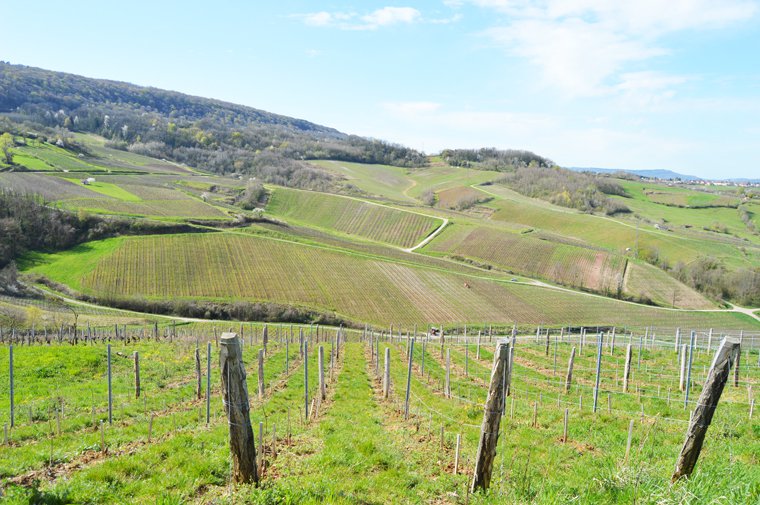
Jean-Michel’s vineyards cross a former line of demarcation evoking the area’s volatile history of resistance during World War II.
Other Terroir Products
Honey
The honey that you can purchase in the region is absolutely phenomenal. My personal favorite is miel d’acacia, a light honey in both taste and flavor. If you get a chance to go to Arbois, head to chocolatier Hinsinger, a Meilleur Ouvrier de France, and try the signature chocolate garnished with honey and decorated with a delicate honeycomb pattern.
Saucisse de Morteau
This smoked sausage is also known as “Belle de Morteau“. The pigs used to make it are fed a diet of whey leftover from the cheesemaking process, resulting in the most tender, flavorful sausage I’ve ever tasted. Cooks often braise them with potatoes, and serve them as a warming, comforting meal.
During one particularly sunny Sunday meal at La Petite Échelle, a small inn on the Swiss border, we found ourselves with France at our feet and Switzerland reflecting in our eyes.
After polishing off a pot of fondue with my table mates — a fondue made with aged Comté and a good pinch of aspérule, an herb grown locally that adds a sweeter, almost vanilla-like flavor to the cheese — we gasped as we were brought plates of rösti, a Swiss classic that looks like a giant potato latke, covered in slices of Morteau sausage.
It was then that I began to question whether this was a trip to teach us about terroir, or just to fatten us up à la “Hansel and Gretel”.
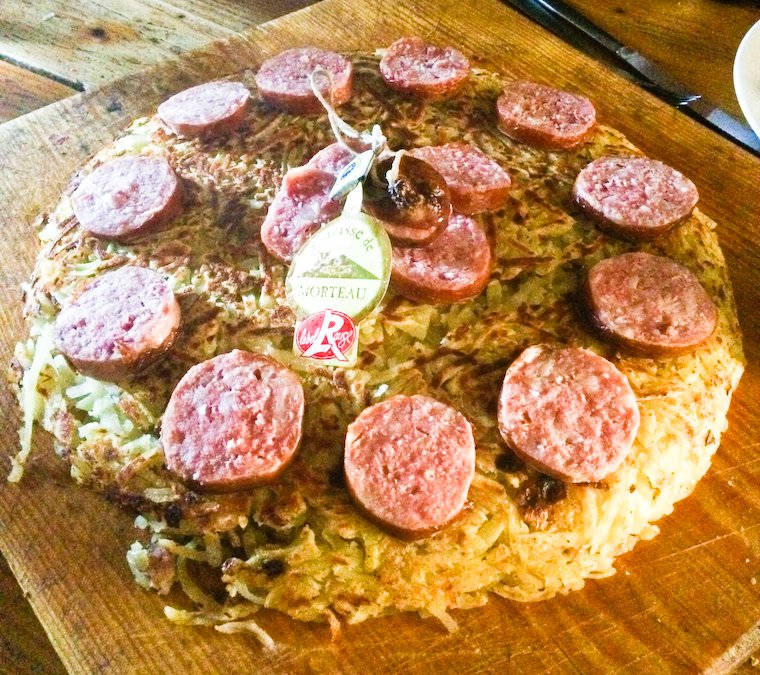
Rösti with Morteau sausage
Can’t make it to the Jura? Stock up on the above-mentioned terroir products in Paris at a La Jurasserie Fine!
* This trip was a part of the Food, Culture, and Communication class taught by Christy Shields at the American University of Paris. Many thanks to her for helping fact-check this post!
** This is the loophole, if you will, that allows Comté to be sold in the United States: raw milk cheeses must be aged at least 60 days in order to be imported. Ergo, we can’t have the good Camembert, but we can have the Parmesan. (Side note: you should be able to find Comté at Costco — let us know where else you spot it!)
*** An appellation is one of the French classification methods to denote terroir. If you see AOC (appellation d’origine contrôlée) on a product, it means that it is a terroir product that is legally protected, and other products not from that region and not following the guidelines can’t use that name (e.g. Champagne can only come from the Champagne region.)

Anne Elder, standing right at the border between France and Switzerland.


